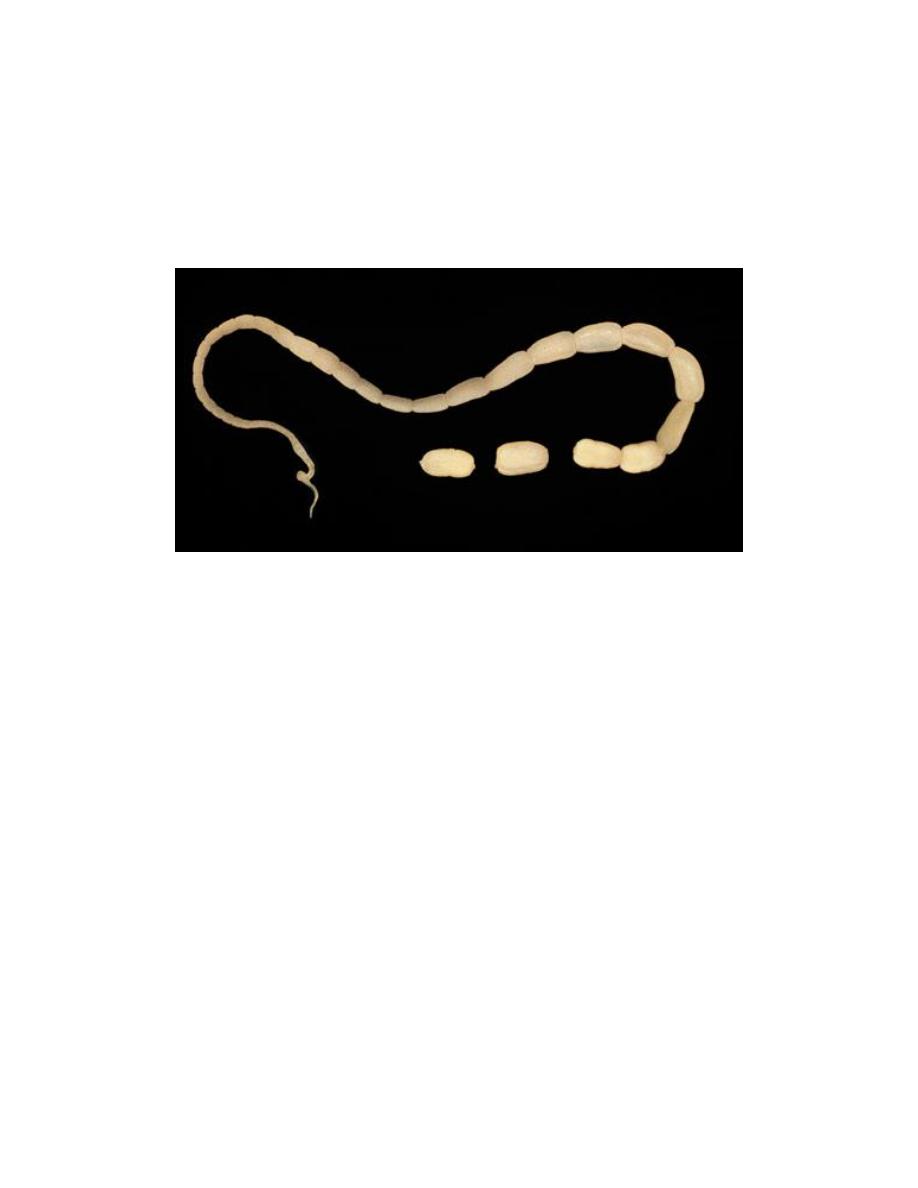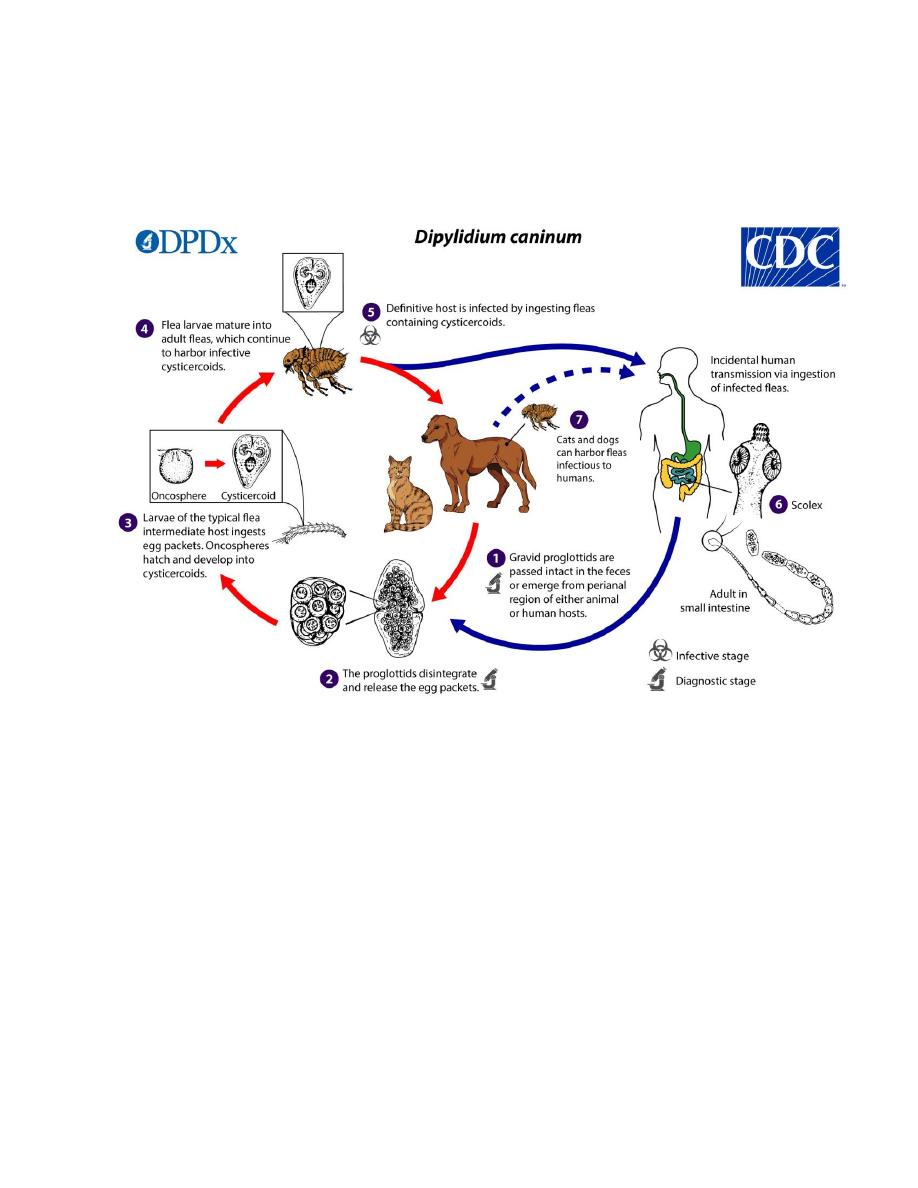
1
Dipylidium caninum
Dipylidium caninum (Linnaaeus, 1758) Railliet, 1892, a cosmopolitan tapeworm of
dog and cat. It has been found in children who fondle infected animals. Human
cases, including young infant, have been diagnosed from Europe, the Orient,
Africa, Latin America, and the United States. The adult worms are medium-sized,
measuring from 10 to 50 cm in length, and consist of several hundred of
proglottids.
The distalmost gravid proglottids are more or less pumpkin-seed-shaped. In
children, the infection frequently solitary. The intact gravid proglottids, containing
polygonal-shaped masses of egg capsules, separate from the strobila and pass
down the intestinal canal and out of the anus, free or in the feces.

2
Mature proglottid Egg mass
Once the proglottids reach soil they become dehydrated and fragment, setting free
the egg capsules, each of which contains several fully embryonated eggs. When the
fleas, lice, and possibly other arthropods ingest the egg capsules or individual eggs,
the librated embryo transforms into a cysticercoid larva. The definitive host
(human) becomes infected by ingesting an infected larval or adult insect.
This infection in the child may produce profuse diarrhea and unrest. Occasionally
there may be severe sensitization reactions, such as urticaria, fever, significant
eosinophilia.
Diagnosis is made on recovery of the characteristic gravid proglottids evacuated in
the stool or migrating out of the anus, and observing the polygonal pattern of the
mother embryonic membranes within the uterus of this cestode. Treatment is the
same as that recommended for Taenia saginata and Hymenolepis nana
(praziquantel), the drug is generally well-tolerated.

3
The life cycle of Dipylidium caninum
